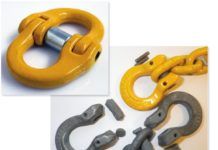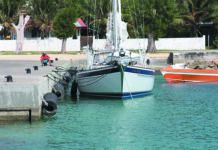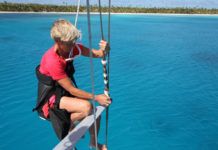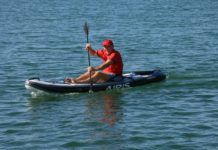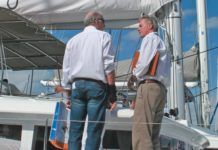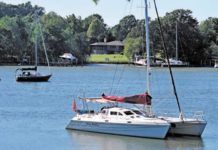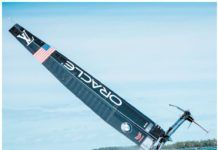The Best Kayak Paddle and Stroke
A paddle should be selected with the same care you buy a shoe, since it is your connection to the water. For long-term cruising a spare may be good idea. A good economical choice is the Aquabound Manta Ray Fiberglass (about $100).
Multihull Special Report
In Part 1 of our special report on multihulls we scrutinized the implications of stability and the benefits derived form a wide stance, buoyancy and hull shape of multihulls. This time well look at structural issues and the energy transfer that takes place due to a multihulls impressive initial resistance to heel. We will also delve into what all this means for the rig, rigging, hull structure and hardware interfaces.
Selling your Sailboat
You want to sell your boat. And youd like to sell it quickly. What can you do to make that happen? We recently interviewed several brokers and surveyors for advice on what helps, what hurts, and what flaws are sure to come to light when you are trying to sell your boat. Remember that the savvy buyer will always overemphasize the unknown, believing that for every fault they uncover there are three more lurking, and that these will cost more to set right than you say or they think. Fortunately, a well-maintained boat can often be prepped for sale with a relatively small investment in time and money. And if the boat hasn't been maintained, youll want to prioritize the tasks required to draw a willing buyer.
Snap shackles not advisable for snubbers.
In regard to your ongoing investigations of snubber hooks (Snubber Chain Hooks Revisited, February 2017), I want to add another idea to the mix. Our boat uses a fixed eye snap shackle spliced onto the end of a three-strand nylon snubber. Our shackle is similar to this Wichards 2 -inch fixed eye snap shackle (part #2472).
Used Boat Review: Vineyard Vixen 29
The Vineyard Vixen 29 was born of another time-a fact that confers upon her some limits, yes, but also an undeniable magic. She is a canoe-stern monohull, 23 feet on the waterline and usually sloop-rigged, that arguably delivers as seakindly a sailing experience as any vessel of her size. While her cabin may edge over toward the camping side of the comfort continuum, her cockpit is more spacious and accommodating than that of some 40-footers, including Passports and Valiants. And while she wont be the first on the course to get going in light air, once the breeze is up past 8 or 10, the Vixens romp is incomparable.
Practical Sailor 2016 Index
Practical Sailor 2016 Index
Multihull Madness
Some say that markets afford a true test of a products value, if so, then boat shows are a great place to test the waters. Over the last two decades, in-water show attendees have noticed how catamarans and trimarans have taken over more and more slip space. Apparently, a growing number of boat buyers are convinced that two or three hulls are better than one. Skeptics still question whether this is a case of design breakthrough or more an example of a marketing success. We think its probably a good dose of each, and its time to take a close look at whats really driving this multihull mania.
Fast Cats Call for a Constant Watch on the Main
When the heeling moment of a multihull overwhelms the righting moment, the boats going to turn upside down. The optimist points out that youll still be afloat, albeit inverted. The bottom line is the cruise or race is definitely over and the trick is not getting trapped under in the cockpit, side deck netting or tangle of a crumpled spar and rigging.
Diving into the Endeavour 42
Just as the Caribbean cruising dream was at its peak in the American consciousness, Endeavour yachts brought in Americas Cup designer Johan Valentijn to create a new breed of Endeavours to compete with an already crowded field of center-cockpit cruisers, most of them bound for the Caribbean charter trade. The end result was a boat that managed to maintain a surprisingly tolerable aesthetic, unlike the typical wedding-cake center cockpit cruiser. The combination of teak trim, bootstripe, and balanced proportions camouflages what is essentially a floating condo.
E42 Build is Typical for Charter Trade
The Endeavour 42 is relatively heavily built to charter-boat scan'tlings, but inconsistencies between hulls means there will be some variability in quality. The biggest refit challenge is the fuel tank.











